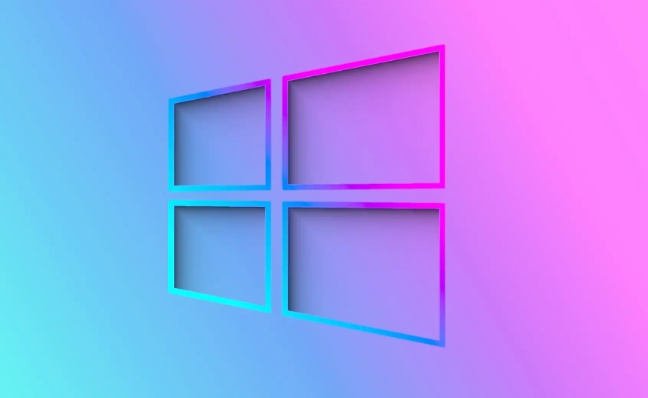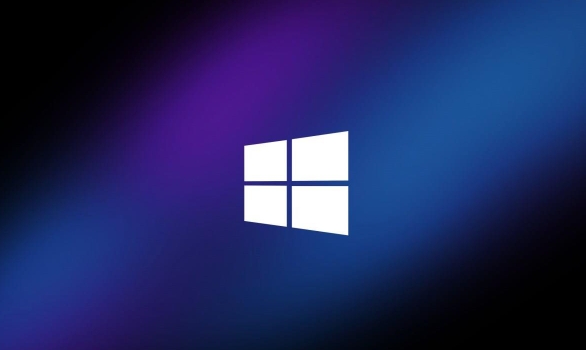 System Tutorial
System Tutorial
 Windows Series
Windows Series
 How to change the processor affinity for an application permanently in Windows
How to change the processor affinity for an application permanently in Windows
How to change the processor affinity for an application permanently in Windows
Aug 03, 2025 am 12:37 AMWindows does not natively support permanently saving processor affinity for applications, but you can achieve persistent affinity using scripts or third-party tools. 1. Processor affinity binds a process to specific CPU cores, improving performance or thermal management, though Windows resets it on each launch. 2. Use a batch script with start and wmic commands to launch the app and set affinity via CPU mask values (e.g., 1 for CPU 0, 3 for CPUs 0 1). 3. Automate the script using Task Scheduler to run at startup or logon, ensuring consistent application of affinity. 4. For true permanence, use Process Lasso, which allows creating persistent rules that automatically apply affinity when the process starts. 5. Windows avoids permanent affinity by default to enable dynamic scheduling for optimal performance, so manual methods are required only when specific control is needed. The best approach is using Process Lasso for automatic, persistent affinity across reboots and restarts.

Changing the processor affinity for an application permanently in Windows isn't directly supported through standard settings—Windows doesn’t save affinity preferences by default when a process closes. However, you can achieve a permanent effect by using automation or third-party tools. Here’s how to do it effectively.

1. Understanding Processor Affinity
Processor affinity means binding a process to specific CPU cores. This can help with performance tuning, reducing context switches, or managing thermal load. But by default, Windows resets affinity each time the application starts.
2. Use a Batch Script with start and wmic (Built-in Tools)
You can create a script that launches your app and sets its affinity at startup. This is the most reliable built-in method.

Steps:
- Open Notepad.
- Paste the following script, replacing the app path and CPU mask:
@echo off start "MyApp" "C:\Path\To\Your\App.exe" timeout /t 3 >nul wmic process where "name='App.exe'" call setaffinity "1" # '1' = CPU 0, '3' = CPU 0 1, '4' = CPU 2, etc.
-
CPU Mask Example:
- CPU 0 →
1 - CPU 1 →
2 - CPU 0 & 1 →
3 - CPU 2 →
4 - All 4 cores →
15(1 2 4 8)
- CPU 0 →
- Save as
LaunchApp.bat. - Use this batch file to start the app every time.
? Pro tip: Place the shortcut to this
.batfile in Startup folder if you want it to run on login.
3. Use Task Scheduler for Automatic Affinity on Launch
You can combine a script with Task Scheduler to simulate permanent affinity.

Setup:
- Create the batch script above.
- Open Task Scheduler → Create Task.
- Set:
- Trigger: At logon or "On startup".
- Action: Run the batch script.
- Check "Run with highest privileges" if needed.
- Use a shortcut to trigger the task if needed.
This won’t set affinity every time the app is opened unless you always launch via the task or script.
4. Third-Party Tools for True "Permanent" Affinity
These tools monitor and enforce affinity automatically:
Recommended Tools:
-
Process Lasso (Free & Pro versions)
- Lets you set CPU affinity rules per process.
- Rules persist across reboots and app restarts.
- Example: Add a rule for
chrome.exe→ Affinity = Cores 0 and 1.
CPU Power Governor or Thread Master (less common, use with caution)
Process Lasso is the most trusted option. It runs in the background and applies rules the moment the app starts.
5. Why Windows Doesn’t Allow Permanent Affinity by Default
The OS scheduler is designed to optimize core usage dynamically. Manually locking apps to cores can reduce performance unless you have a specific reason (e.g., reducing latency in real-time apps, avoiding core parking issues, or thermal management on laptops).
Summary: Best Way to Make It Permanent
- ? Not possible via standard Windows settings.
- ? Use a batch script wmic for simple cases.
- ? Use Process Lasso for true persistent, automatic affinity.
Basically, you need a tool or script that re-applies the setting each time the app launches—Windows won’t remember it on its own.
The above is the detailed content of How to change the processor affinity for an application permanently in Windows. For more information, please follow other related articles on the PHP Chinese website!

Hot AI Tools

Undress AI Tool
Undress images for free

Undresser.AI Undress
AI-powered app for creating realistic nude photos

AI Clothes Remover
Online AI tool for removing clothes from photos.

Clothoff.io
AI clothes remover

Video Face Swap
Swap faces in any video effortlessly with our completely free AI face swap tool!

Hot Article

Hot Tools

Notepad++7.3.1
Easy-to-use and free code editor

SublimeText3 Chinese version
Chinese version, very easy to use

Zend Studio 13.0.1
Powerful PHP integrated development environment

Dreamweaver CS6
Visual web development tools

SublimeText3 Mac version
God-level code editing software (SublimeText3)
 How to change the system display language for all users in Windows
Jul 31, 2025 am 08:18 AM
How to change the system display language for all users in Windows
Jul 31, 2025 am 08:18 AM
InstallthedesiredlanguagepackviaSettings→Time&Language→Language®ion,ensuring"SetasmyWindowsdisplaylanguage"isselected.2.Changethesystemdisplaylanguageinthesamemenuandrestart.3.OpenControlPanel→Region→Administrativetab,click"
 How to reset the Microsoft Store in Windows
Jul 31, 2025 am 08:23 AM
How to reset the Microsoft Store in Windows
Jul 31, 2025 am 08:23 AM
ResettheMicrosoftStoreviaSettingsbygoingtoApps>Installedapps,selectingMicrosoftStore,clickingAdvancedoptions,thenRepairandResetifneeded.2.Ifthatfails,re-registertheStoreusingPowerShellasadminwiththecommand:Get-AppXPackage-NameMicrosoft.WindowsStor
 How to reset the TCP/IP stack in Windows
Aug 02, 2025 pm 01:25 PM
How to reset the TCP/IP stack in Windows
Aug 02, 2025 pm 01:25 PM
ToresolvenetworkconnectivityissuesinWindows,resettheTCP/IPstackbyfirstopeningCommandPromptasAdministrator,thenrunningthecommandnetshintipreset,andfinallyrestartingyourcomputertoapplychanges;ifissuespersist,optionallyrunnetshwinsockresetandrebootagain
 How to install Windows on a Mac without Boot Camp
Jul 31, 2025 am 11:58 AM
How to install Windows on a Mac without Boot Camp
Jul 31, 2025 am 11:58 AM
Without BootCamp, installing Windows on Mac is feasible and works for different chips and needs. 1. First check compatibility: The M1/M2 chip Mac cannot use BootCamp, it is recommended to use virtualization tools; the Intel chip Mac can manually create a boot USB disk and install it in partition. 2. Recommended to use virtual machines (VMs) for M1 and above chip users: Windows ISO files, virtualization software (such as ParallelsDesktop or UTM), at least 64GB of free space, and reasonably allocate resources. 3. IntelMac users can manually install it by booting the USB drive: USB drive, WindowsISO, DiskU is required
 A guide to custom Windows installation options
Aug 01, 2025 am 04:48 AM
A guide to custom Windows installation options
Aug 01, 2025 am 04:48 AM
Choose"Custom:InstallWindowsonly(advanced)"forfullcontrol,asitallowsacleaninstallthatremovesoldissuesandoptimizesperformance.2.Duringsetup,managepartitionsbydeletingoldones(afterbackingupdata),creatingnewpartitions,formatting(usingNTFS),ors
 How to manage AppLocker policies in Windows
Aug 02, 2025 am 12:13 AM
How to manage AppLocker policies in Windows
Aug 02, 2025 am 12:13 AM
EnableAppLockerviaGroupPolicybyopeninggpedit.msc,navigatingtoApplicationControlPolicies,creatingdefaultrules,andconfiguringruletypes;2.Createcustomrulesusingpublisher,path,orhashconditions,preferringpublisherrulesforsecurityandflexibility;3.Testrules
 Step-by-step guide to installing Windows from an ISO file
Aug 01, 2025 am 01:10 AM
Step-by-step guide to installing Windows from an ISO file
Aug 01, 2025 am 01:10 AM
DownloadtheWindowsISOfromMicrosoft’sofficialsite.2.CreateabootableUSBusingMediaCreationToolorRufuswithaUSBdriveofatleast8GB.3.BootfromtheUSBbyaccessingthebootmenuoradjustingBIOS/UEFIsettings.4.InstallWindowsbyselectingcustominstallation,choosingtheco
 How to install Windows on a Mac
Jul 31, 2025 am 10:07 AM
How to install Windows on a Mac
Jul 31, 2025 am 10:07 AM
ForIntel-basedMacs,useBootCampAssistanttocreateadual-bootsystemwithWindowsbypreparingaUSBdrive,downloadingaWindowsISO,partitioningthedisk,andinstallingWindowsalongsidemacOSwithsupportdrivers.2.ForAppleSiliconMacs(M1/M2/M3),usevirtualizationsoftwareli





